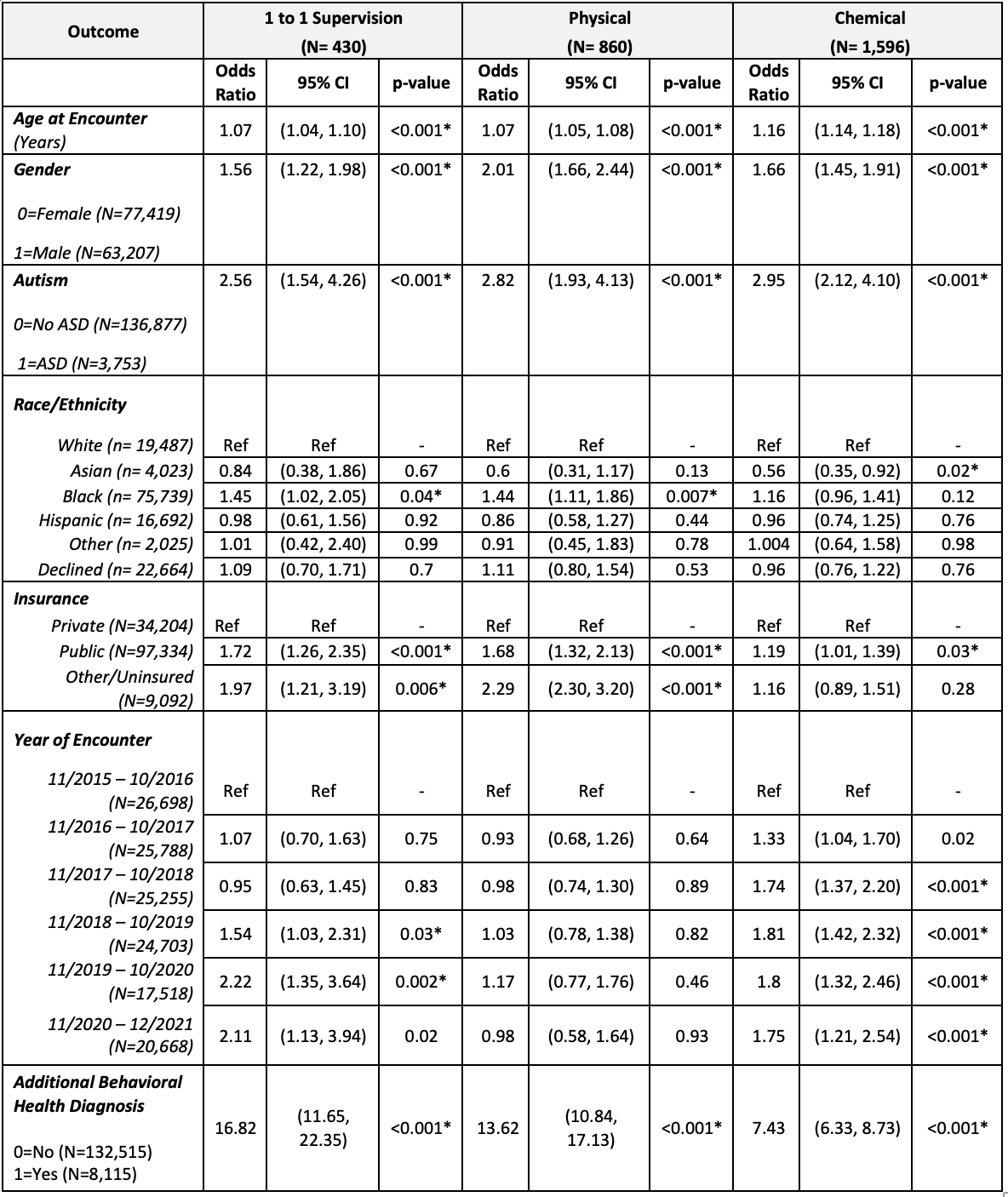Developmental and Behavioral Pediatrics: Autism
Developmental and Behavioral Pediatrics 2
574 - Use of Behavioral Interventions in Patients With and Without Autism Spectrum Disorder in the Inpatient and Emergency Departments of an Urban Safety-net Hospital: A retrospective chart review
Publication Number: 574.109
- SC
Sarah K. Canale, MD (she/her/hers)
Developmental and Behavioral Pediatrics Fellow
Boston Medical Center
Winchester, Massachusetts, United States
Presenting Author(s)
Background:
Patients with Autism Spectrum Disorder (ASD) more frequently use hospital services than those without ASD, have longer hospital stays, and are subject to behavioral interventions (BI) in the management of violent and/or potential unsafe behaviors in the medical setting.
Objective:
To examine the demographic characteristics and use of orders for BI: 1 to 1 supervision, physical restraints and chemical restraints in patients with and without ASD seen in the emergency department (ED) and inpatient unit (IU).
Design/Methods:
A retrospective chart review of the electronic medical record data for patients 2 through 25 years of age seen in the ED and IU at an urban Northeast hospital between November 2015 and December 2021 ascertained: presence of an ICD-10 code for ASD (as coded in the problem list or encounter diagnosis), presence of additional behavioral health encounter diagnosis or ICD-10 F code, age at encounter, year of encounter, gender, race, insurance type (public, private, or other), and orders for types of BI. Demographic correlates selected based on prior literature of increased BI use were assessed and, to control for patients with multiple encounters, Generalized Estimating Equations (GEE) models were used.
Results:
Of the total of 61,867 patients accounting for 140,630 distinct encounters, 1,152 autistic patients with 3,753 encounters were identified. Adjusted analyses demonstrated that increasing age, male gender, presence of an ASD diagnosis alone, presence of another behavioral health diagnosis, and public insurance were associated with increased odds of any type of BI use in the ED, but not the IU.
After adjusting for covariates, Black race was significantly associated with increased use of all types of BI in the ED setting. Additionally, odds of chemical restraints were higher in later years compared to 2015-2016. ASD diagnosis was significantly associated with increased use of all types of BI in all settings except for 1 to 1 supervision in the ED setting.
Conclusion(s):
ASD diagnosis was independently associated with increased odds of having an order placed for BI in the ED and IU, after controlling for covariates. Interventions should be further explored to address this trend.
